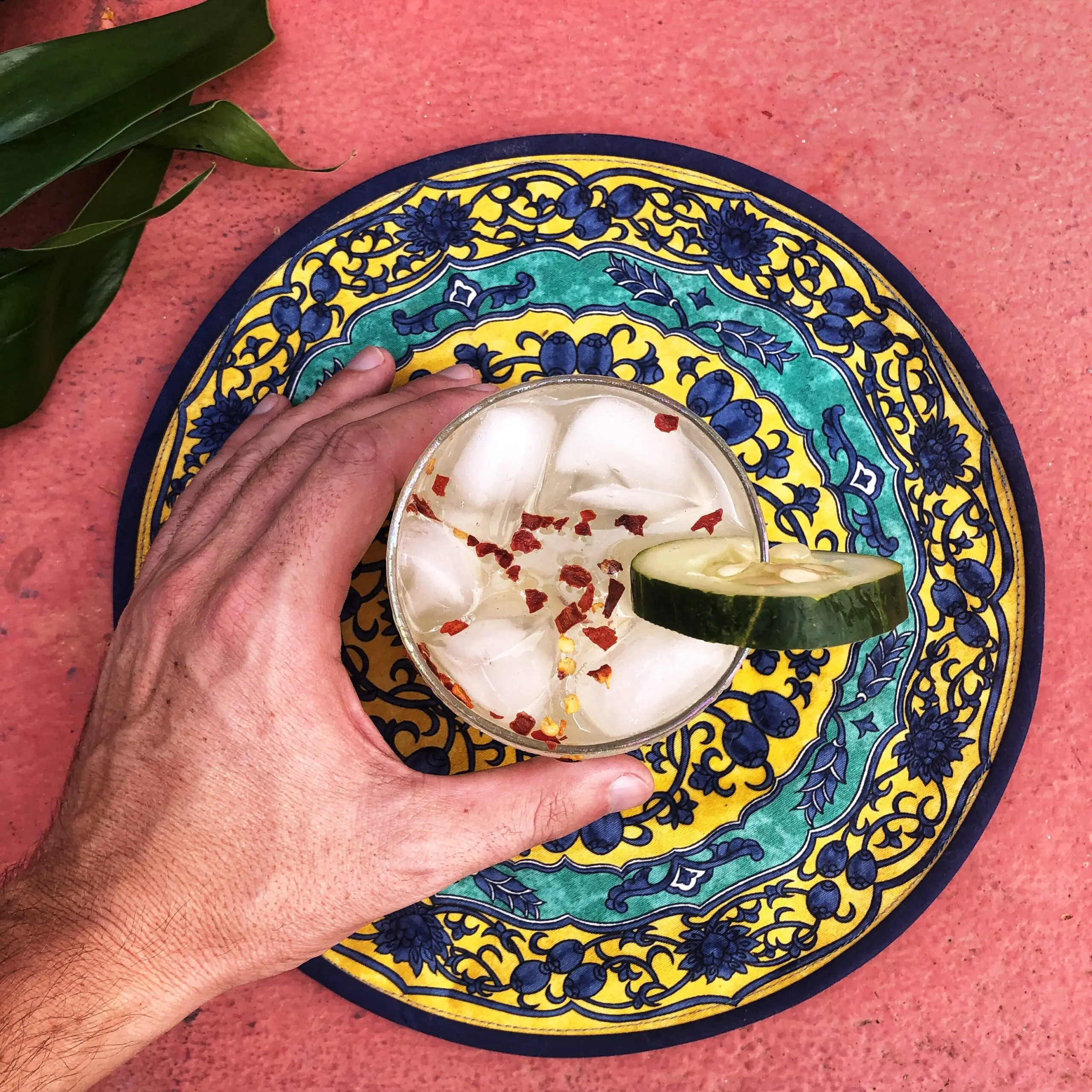Everyone knows that agua means water. But in Oaxaca, Mexico, agua is different from agua pura, which is different from agua mineral; mezcal blanco is the same as mezcal joven, but different from mezcal reposado or mezcal añejo. And then there’s tejate (as distinct from Tecate, a brand of beer), chilacayota, pulque, atole, champurrado, chocolate, and café de olla as distinct from coffee.
Visitors to the south central Mexican state of Oaxaca are advised to learn the basic differences between one drink or beverage and another. While making a “mistake” in the course of ordering in a restaurant, bar or club, or for that matter from a street vendor, can in fact be a gift in disguise, it’s perhaps better to know from the outset, and then experiment with a bit of background knowledge. Of course neither beer nor Coca Cola need an explanation, but otherwise a bit of assistance in knowing one’s drinks and bevreages in Oaxaca can go a long way.
Table of Contents
The Water / Juice Conundrum in Oaxacan Restaurants: Is the Beverage Carbonated or Not; or Sweetened and Flavored with Fresh Fruit?
- Agua del Día: A fruit juice, generally made with fresh fruit and purified water, frequently with sugar added. It’s commonly served as part of a comida corrida (full meal of the day), but can be ordered by the glass or pitcher, á la carte. Agua del día is often referred to as agua or agua de sabor.
- Agua Pura: Plain, purified water, often referred to as agua natural. It’s usually served in a plastic bottle, but in some of the better restaurants it’s served in a glass. But don’t worry, even un-bottled it’s purified and of course safe, having been poured from a five gallon jug known as a garafón or a smaller bottle.
- Agua Mineral: Soda water, plain and simple, generally containing added salts and minerals depending on the brand; sometimes referred to as Tehuacan.
- Limonada and Naranjada: Limeade and orangeade respectively, traditionally made with fresh fruit, sugar added. The waiter usually asks if you want it with agua pura or agua mineral (plain or sparking).
- Jugo: Fruit juice, but it’s best to ask if it’s 100% fruit juice without added sugar, if a consideration.
Unique Alcoholic and Fermented Drinks and Beverages Traditionally Served in Oaxaca: Mezcal, Pulque, Tepache, Michelada & Suero
- Mezcal (mescal): The alcoholic drink of choice in Oaxaca, made from the agave (maguey) plant. The heart or piña of the agave is baked, crushed, fermented, and finally distilled, usually twice. Mezcal blanco or joven means unaged, while reposado signifies mezcal aged in oak barrels for at least two months; at a year or longer it’s known as añejo. The production process of mezcal is distinct from that of tequila, as is the variety of agave used.
- Pulque: The fermented juice extracted from the heart of particular varieties of agave, known as pulqueros. “Honey water,” or aguamiel, is gathered by campesinos from a “well” in the middle of the plant, twice daily, then fermented without the use of additives (as in the fermentation process for mezcal). Pulque, dating to pre-Hispanic times, is most often found in markets such as Ocotlán on Fridays and Tlacolula Sundays, or by passing by the town of Matatlán where there are several producers with signs out in front of their homes.
- Tepache: There are many formulations, some of which include mezcal or pulque as ingredients. However many recipes are more basic, the primary ingredient being pineapple. Whether or not a fermented or distilled beverage is added is a matter of the individual recipe. As with pulque, tepache is commonly found in weekly Oaxacan marketplaces.
- Michelada: A beer-based drink. It’s essentially a Bloody Mary made with one’s choice of beer, instead of with hard liquor. The heat comes from, frequently, chile, Tabasco, lime juice, and at times Worcestershire and / or Maggi.
- Suero: As distinct from a michelada, this drink has a small amount of lime juice and salt at the botom of the mug, into which the beer is poured.
Hot Drinks Available on the Street and in Restaurants in Oaxaca: Chocolate, Atole, Champurrado, Coffee and Café de Olla
- Chocolate: Hot chocolate is a traditional Mexican drink, made with either water or milk. One is usually asked, “con agua o leche.” Ingredients for making chocolate are usually cacao, sugar, cinnamon and sometimes almond.
- Atole: A generic hot drink, usually made with a corn masa base; sometimes pre-sweetened and sometimes not; sometimes with cinnamon and at other times plain; and sometimes made with rice.
- Champurrado: Essentially atole with chocolate added. Atoles and champurrados are frequently found at roadside stands along with other foodstuffs such as tamales and tortas (a sandwich on a crusty bun).
- Café (coffee): For a traditional American-style coffee, ask for “americano.” However at tiny comedors café usually means instant coffee, and is referred to as Nescafe – look for the bottle of instant coffee somewhere on the counter.
- Café de Olla: Literally “coffee from the pot,” café de olla is usually a sweetened stove-top prepared coffee with essence of cinnamon and sometimes clove and / or allspice.
And Then There’s The Rest: Tejate, Chilacayota and Soft Drinks in Oaxaca Restaurants and Markets
- Tejate: This pre-Hispanic drink has been known as the “Drink of The Gods.” It’s noted for its painstaking, and lengthy preparation process, and diversity of ingredients, some of which may seem strange. Again frequently found in markets in Oaxaca, a tell-tale sign that one has come across tejate is happening upon a woman standing behind an oversized round bowl with a frothy liquid inside, sometimes white (made with coconut and generally not cacao) but usually beige in color. The ingredients are corn, the seed of the mamey fruit, cacao, the flower of the cacao plant, coconut, ash, and water, all sweetened with cane sugar. Try it!
- Chilacayota: Made with a spaghetti squash type of calabaza known as a chilacayota, the drink has the consistency of spaghetti squash mixed with water. It traditionally has squash seeds left in it. It’s sweetened with panela (piloncillo) and flavored with cinnamon and either lime zest or pineapple. Again, worth a try.
- Soft Drinks: They’re known as refrescos, and include the usual, plus some variations. Pepsi is Pepsi, Coca is Coca Cola, Coca Light is Diet Coke. Manzana or Manzana Lift is apple flavored soda, and Boing is a brand of soft drink made with real fruit juice. Esprite is Sprite. Esquirt is Squirt (a grapefruit [toronja] flavored drink), and you’ll get anything orange by asking for refresco de naranja, or simply Fanta.

It’s not a matter of where, but when. Time is precious and my time spent living and experience the cultures of this world is what I lust for. This is why I created this website, to share true, genuine experiences and not just typical touristy info. Travel, the love of coffee, and food!
